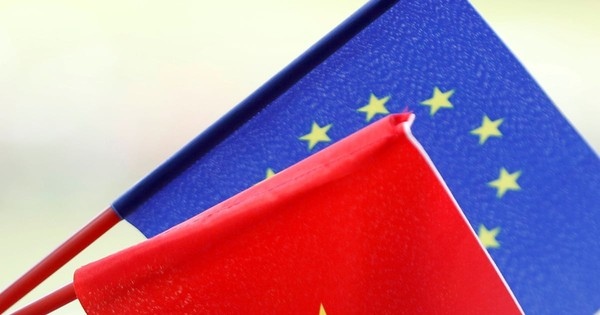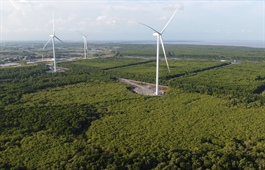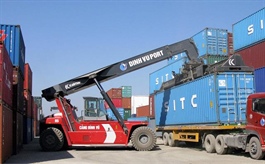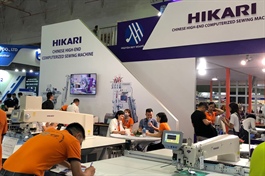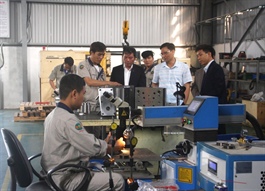European Union maintains high standards on exports
European Union maintains high standards on exports
People refer to the European Union (EU) export market as one market that maintains the highest and most difficult quality standards in the world when dealing with imported goods from other countries.
Illustrative photo. |
These standards are being continually raised even higher, causing much more difficulty for enterprises in countries such as Vietnam.
Strict standards
On 20 June, the Vietnam Fruits and Vegetables Association (VinaFruit) sent a dispatch to the Vietnam SPS office (VAN) requesting to work again with the EU market to reduce the frequency of testing on dragon fruits, spices and vegetables when exporting to the EU market. Previously, according to the EU announcement on 13 June, the rate of testing dragon fruit samples to check for chemical residues was 20% and the rate of testing on spices and vegetables was 50%.
VinaFruit said this inspection rate is too high. For instance, ten kg export dragon fruit loses two kg during inspection, causing the profit of enterprises to be eroded. The long inspection time of four days also affects the quality of the product, not to mention that when the shipment does not meet the EU requirements then enterprises have to pay an extra fee. VinaFruit recommends that the inspection rate must be either 3% or the EU can appoint an inspection agency in Vietnam to help inspect goods before exporting.
This situation is not just causing difficulties for only vegetables, but seafood exports are also facing several problems because of strict standards set by the EU market. Accordingly, from 3 May 2022, seafood exporters must apply the maximum amount of mercury residue in products, ranging from 0.3 microgram to 1 microgram per kilo, depending on the type of product.
European Union importers also have set higher requirements for packaging of all products. Currently, a number of Vietnamese seafood exporters have received requests to change packaging quality to become more environmentally friendly and to follow stricter requirements. This forces Vietnamese enterprises to find new suppliers, which raises the costs higher. However, businesses have no other choice because this is a large and long-term market for the export of seafoods.
The textile industry is also facing endless new EU regulations. Currently, the sustainable and circular development strategy for textiles with a vision upto 2030 is getting much attention from European Union countries. This strategy stipulates that textile products entering the EU market must have a longer life, be reusable, and also be repairable. All these features must have a digital certificate, although some key standards will be applicable only from 2024.
To meet these requirements, input materials for the production of enterprises must change. Over the years, new EU standards for the textile industry have been introduced continuously, especially green standards such as those covering the environment and emission reduction, and social responsibility. All these additionally added standards are always more demanding than the previous standards, causing new problems and extra costs for the textile industry.
Green standards are currently seen as mandatory for almost all businesses. In a press conference to introduce the exhibition and green economy forum organized by the European Business Association (EuroCham) of Vietnam at the end of May, a representative of EuroCham affirmed that at the request of other countries that are importing, manufacturing enterprises have to mandatorily follow the path to greening the production process. Therefore, the pressure for green growth in Vietnam comes from all sides.
Businesses must adapt
Before the EU-Vietnam Free Trade Agreement (EVFTA) took effect, Vietnam's fruit and vegetable export products enjoyed preferential tax rates under the universal preferential tariff system at a fairly high level of 10% to 20%. When the EVFTA came into effect on 1 August 2020, the doors seemed to have become much wider when vegetables and fruits were among the top industries enjoying tariff incentives. Almost 94% of the 547 tariff lines for fresh and processed vegetables and fruits have been reduced by the EU to 0%, including many other popular products of Vietnam. However, nearly two years after the EVFTA came into effect, Vietnamese vegetables and fruits hold only a modest market share of less than 1% in the EU, even though this market has a very high annual import demand.
The reason is that the EU has set very strict requirements for imported fruits and vegetables. Each type of fruit or vegetable usually has to meet its own requirements for export. While Vietnam still lacks synchronization in production and also lacks large-scale planting areas that meet standards, the opportunity that is hand has not been grasped yet. In addition, the EU does not have a quarantine representative in Vietnam, so it is difficult for large enterprises to tackle these problems on their own.
The solution to the problems for dragon fruits, spices, as well as vegetables, for entering the EU market easily, businesses need to control quality from within the country. Only when 100% of the criteria for the shipment is guaranteed, will it be exported without a hitch. An enterprise specializing in exporting fruits said that in order to do shipments without any hassles there must be a planting area and the enterprise must control all stages.
Such areas are still too few in Vietnam and if businesses cannot cope, it will be difficult to expand their market share in the larger EU market. In fact, when the importing country introduces regulations, the exporting country has only two options, one is to find a way to adapt and second is to lose the order if requirements are not met. Meanwhile, the loss of orders in a large market like the EU is difficult to accept for some sectors of Vietnam, such as the textile industry. This means that it is the businesses that will have to adapt and improve their methods.
Mr. Vu Duc Giang, Chairman of the Vietnam Textile and Apparel Association (VITAS) said that the textile and garment industry is confident and can adapt to new regulations. In recent years, many large enterprises in the garment industry such as Garment 10, Viet Thang Jeans, and Phong Phu, are investing in the latest technology to gradually meet the green requirements of major markets, including the EU market.


